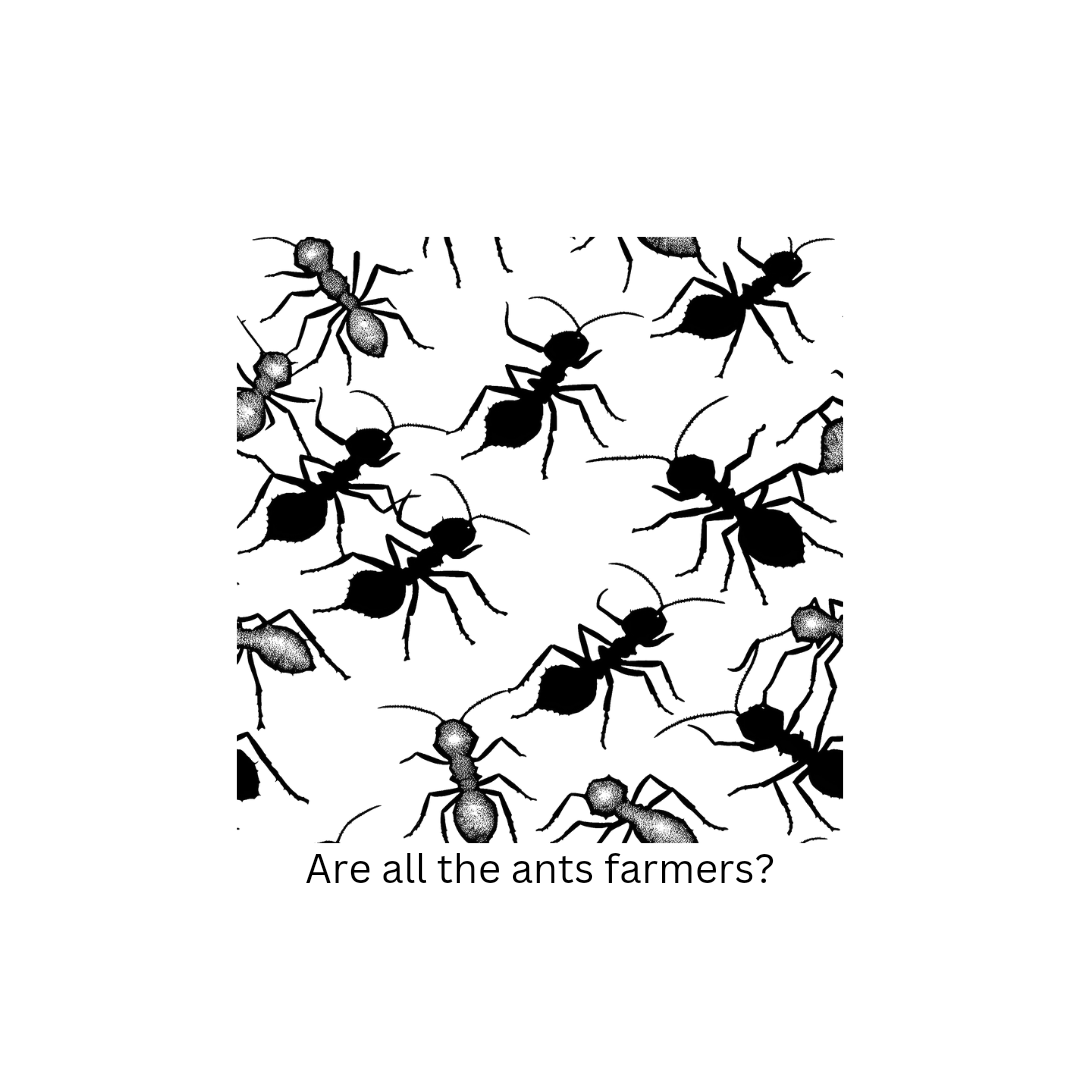Ants are fascinating creatures with a wide range of behaviors that play crucial roles in their ecosystems. Among their many behaviors, some ant species are known for their farming activities, such as cultivating fungi or herding aphids for honeydew. But do all ants farm? In this article, we explore the different types of ants, their farming techniques, and whether farming is a universal trait among these industrious insects.
What Does It Mean for Ants to Be Farmers?
When we talk about “ant farming,” we usually refer to specific behaviors where ants actively cultivate or tend to other organisms for food. The most well-known example is fungus-farming ants (e.g., leafcutter ants), which cut leaves and carry them back to their nests to feed fungi. The ants then harvest the fungi as a food source. Another form of farming can be seen in aphid-herding ants, which protect and care for aphids in exchange for honeydew, a sugary substance aphids excrete.
These behaviors demonstrate the intricate relationships ants can have with other species, benefiting both the ants and their partners in a form of mutualism. However, not all ants engage in these farming practices.
The Leafcutter Ants: Nature’s Most Advanced Farmers
One of the most famous examples of ant farming comes from the leafcutter ants. These ants belong to the genus Atta and Acromyrmex, and they are found in tropical regions. They collect plant material, but they do not consume it directly. Instead, they use it to cultivate a specific type of fungus inside their nests. This fungus serves as their primary food source.
The relationship between leafcutter ants and fungi is highly specialized. The fungi rely on the ants to cultivate them, while the ants rely on the fungi for nourishment. This mutual dependence is an example of symbiosis, where both species benefit from the relationship. The ants’ farming efforts are so sophisticated that they even control the environment inside their nests to ensure optimal fungal growth.
Do All Ants Farm?
Despite the impressive farming techniques of some ants, not all ant species farm. In fact, farming behaviors are relatively rare among the more than 12,000 known ant species. Many ants are predators, hunting small insects or scavenging for food. Others are omnivores, feeding on a variety of plant and animal materials.
Some ant species, such as carpenter ants (Camponotus spp.), do not farm at all. Instead, they live in decaying wood and feed on a mixture of proteins and sugars, often from dead insects or plant matter. These ants play important roles in decomposition but do not engage in the type of farming we associate with leafcutter ants or aphid-herding ants.
Ant Farming and Its Role in Ecosystems
The farming behaviors of ants contribute significantly to their ecosystems. For example, the leafcutter ants’ fungus-growing activities help break down plant material, promoting nutrient cycling and decomposition. The presence of these ants can have profound effects on plant populations and soil health, as their nests aerate the soil and recycle organic matter.
Similarly, aphid-farming ants help maintain aphid populations, which can impact plant health. However, this relationship is not always beneficial to plants, as aphids can be pests that damage crops.
Conclusion: Farming Is Not Universal Among Ants
While certain species of ants, such as leafcutter ants and aphid-herding ants, are known for their farming behaviors, the majority of ant species do not farm. Farming is a specialized behavior that has evolved in a few ant species to suit their specific ecological niches. Most ants rely on more traditional foraging or hunting techniques to obtain food, contributing to ecosystems in other ways.
Understanding the diversity of ant behaviors, including farming, offers insight into the complex relationships between ants, other species, and their environments. Whether ants are farmers or predators, their impact on ecosystems is undeniable, making them some of the most influential insects in nature.




